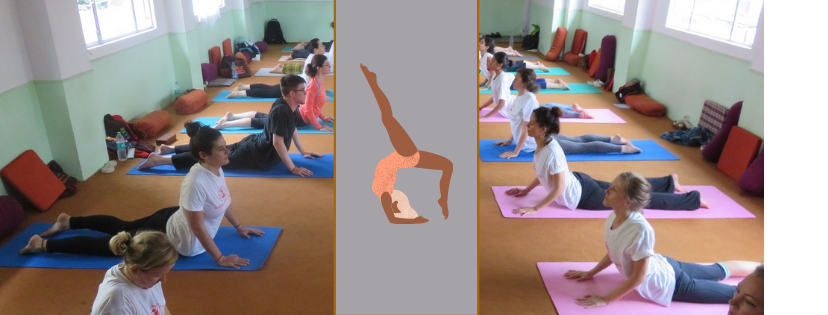Therapeutic Yoga Classes:
Unveiling Your Potential: A Guide to Therapeutic Yoga
Imagine a practice that gently yet powerfully soothes your body, calms your mind, and uplifts your spirit. That's the essence of therapeutic yoga. It's a personalized approach to yoga that tailors poses, breathing exercises (pranayama), and meditation to address your unique needs and goals.
Unlike a typical yoga class, therapeutic yoga focuses on specific concerns, whether physical limitations, emotional imbalances, or a desire for deeper relaxation. Here's a deeper look into this transformative practice and how it can benefit you:
What is Therapeutic Yoga?
Therapeutic yoga goes beyond the physical postures (asanas) often associated with yoga. It weaves together various elements like:
- Gentle Poses (Asanas): Adapted and modified to suit your individual needs and limitations, these poses can improve flexibility, range of motion, and strength.
- Breathing Exercises (Pranayama): Focused breathing techniques can help manage stress, anxiety, and even chronic pain.
- Meditation: Quieting the mind through meditation cultivates inner peace, reduces stress, and improves focus.
- Yoga Philosophy: Understanding core yogic principles like self-care and mindfulness can empower you to take charge of your well-being.
Benefits of Therapeutic Yoga:
Therapeutic yoga offers a multitude of benefits for individuals:
- Physical Benefits: Improved flexibility, joint health, posture, pain management, and even balance.
- Mental & Emotional Benefits: Reduced stress, anxiety, and depression, improved mood, and enhanced self-awareness.
- Overall Well-being: Enhances sleep quality, boosts energy levels, and promotes a sense of inner peace and well-being.
- Injury Rehabilitation: Therapeutic yoga can be an effective tool for injury recovery by strengthening supporting muscles and improving flexibility around the injured area.
Therapeutic Yoga Classes at Buddha Hall:
Morning (7:00 AM - 8:30 AM):
- Gentle Flow: A calming and restorative practice to ease into the day, focusing on gentle stretches, mindful breathing, and meditation. Ideal for beginners or those seeking a relaxing start to their day.
Evening (6:00 PM - 7:30 PM):
- De-Stress & Restore: This class focuses on releasing tension from the day through targeted poses, breathwork, and guided meditations, leaving you feeling rejuvenated and ready for a restful sleep.
Additionally:
- Private Sessions: Tailored one-on-one sessions allow you to work directly with a certified yoga therapist to address specific needs and goals.
Remember: Therapeutic yoga is a journey of self-discovery. Classes are open to all levels, and modifications can be made to accommodate any limitations.
Join us at Buddha Hall and embark on a path to holistic well-being. Let therapeutic yoga guide you towards a healthier, happier, and more fulfilling you!


Merry Walter
We denounce with righteous indignation and dislike men who are so beguiled and demoralized by the charms of pleasure of the moment the pain and trouble that.